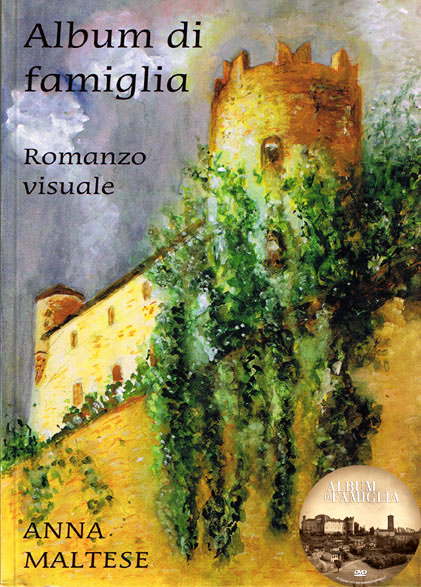This enticing family saga unfolds on the background of Italian history from 1870 to 1945. The rich narrative tapestry includes a castle in the countryside near Turin, three women, three generations, and a multitude of minor characters. It brings to the fore individual lives and human predicaments, personal feelings and universal themes. The lives of the three main characters, apparently ordinary, but actually tragic in their inexorable decline, are placed in a coral context that includes: the castle dwellers and the villagers, industrial entrepreneurs and socialist agitators, dive of the silent screen and working girls, American officers in WWI, fascist thugs and victims of the regime, a rogue and an honest prostitute, a star of the Neapolitan varieté, a Russian prince, a descendant of Sir Walton the pirate, a band of partisans, a populist priest, and even a domestic leopard.
The place that inspired the novel is the Castello di Cortanze, which belonged to the author’s family and served as the set for the staging of a video.
The novel is currently being translated into English and will come out in the Spring of 2019.
purchase:
Album di famiglia • Ibs-italia • ediorso.it • amazon-it
Praise for Album di famiglia
“I liked the book immensely, from beginning to end. I found it enticing, evocative, at times heart rendering, at times even comic… The narrative carries you from page to page relentlessly. And now that I’m finished, I want to start again. . .”
“Being the first fiction book by this author, the literary quality is even more striking. I’m not Italian, but I have spent many years in Italy. I’m sure certain scenes from this novel will forever be etched in my mind–scenes that in a few words gave me a picture of fascism more complete that the many volumes written by historians and scholars. Moreover, this book gave me a better knowledge of contemporary Italy than all of the books I have read so far.”
“I found this novel very enticing and certainly worth of a film adaptation. The narrative style is on the same level as that of the best writers of our time, both for the attention to details and for the description of the characters that are finely sketched in their complex psychological dimensions. This novel is a large narrative fresco with visual impact, historical scope and sustained pace, which makes us think of Bertolucci’s cinematic epic 1900. It can also be regarded as a kind of Piedmontese counterpart to The Leopard.”
“It’s a beautiful story. The language is impeccable, not overly literary (unnatural), and not overly conversational (sloppy) either. It’s the perfect language for this story, a saga with its truth filtered through the fabric of narration. It’s the work of a novelist, not of a memoirist.”
“This novel, which has its beginning in family photos, reminds me of the monumental work of Amos Oz, A Story of Love and Darkness. The present novel traces a family saga over three generations, weaving the stories of the many characters with the facts of Italian history. The mythical castle, which provides the visual frame to the novel, serves as the backdrop for the family album which the author used as the literary expedient to begin the narrative.”
“This book brought back sensations that had partly disappeared, and made me forget the particular in favor of a universal world into which everyone can project himself. . . The reference to The Leopard is the first thing that comes to mind because of the analogous situation of an old prominent family experiencing its gradual decline, but also Buddenbrooks by Thomas Mann and The Family Moskat by Isaac Singer.”

